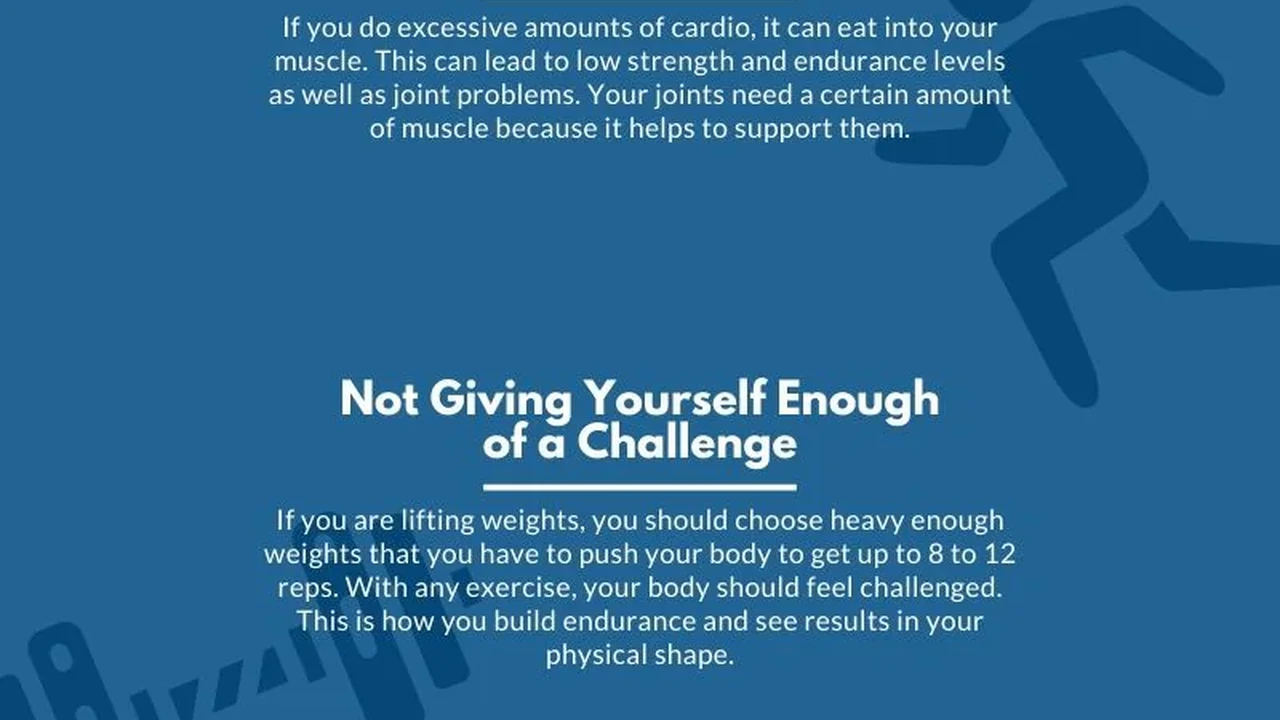5 Effective Breathing Exercises for Anxiety Relief
Learn how to create a sustainable lifestyle and adopt eco-friendly practices. This guide covers essential tips for reducing your environmental impact. Contribute to a healthier planet and improve your well-being with sustainable living.

Understanding Sustainable Living and its Importance
Sustainable living is all about making choices that minimize your impact on the environment. It's about reducing your carbon footprint, conserving resources, and protecting ecosystems for future generations. Why is this so crucial? Well, our planet is facing some serious challenges, including climate change, pollution, and resource depletion. By embracing sustainable practices, we can help mitigate these problems and create a more resilient and equitable world.
Think of it as a long-term investment. Short-term convenience often comes at a cost to the environment. Sustainable living encourages us to think critically about our consumption habits and choose options that are better for the planet, even if they require a little extra effort or upfront investment.
Moreover, sustainable living isn't just about environmental benefits. It can also improve your health and well-being. For example, eating locally sourced organic food can reduce your exposure to harmful pesticides and support local farmers. Walking or cycling instead of driving can improve your physical fitness and reduce air pollution. It's a win-win situation!
Reducing Your Carbon Footprint Practical Steps
Your carbon footprint is the total amount of greenhouse gases you generate through your daily activities. It's a measure of your impact on climate change. Here are some practical steps you can take to reduce it:
- Transportation: Opt for public transport, cycling, or walking whenever possible. If you need a car, consider a hybrid or electric vehicle. Carpool with colleagues or friends. When flying, choose direct flights and pack light. Carbon offsetting programs are also available to compensate for the emissions from your flights.
- Energy Consumption: Switch to renewable energy sources like solar or wind power. Install energy-efficient appliances and light bulbs. Unplug electronics when not in use. Use a programmable thermostat to regulate your home's temperature. Insulate your home properly to reduce heat loss in winter and heat gain in summer.
- Diet: Reduce your consumption of meat, especially beef. Meat production is a significant contributor to greenhouse gas emissions. Eat more plant-based meals, focusing on locally sourced and seasonal produce. Avoid processed foods, which require more energy to produce and transport.
- Consumption Habits: Buy less stuff. Before making a purchase, ask yourself if you really need it. Choose products with minimal packaging. Support companies that are committed to sustainability. Repair items instead of replacing them. Donate or sell unwanted items instead of throwing them away.
Conserving Resources Water and Energy
Conserving resources is another crucial aspect of sustainable living. Water and energy are essential for life, and we need to use them wisely to ensure their availability for future generations.
Water Conservation Techniques
- Fix Leaks: Even small leaks can waste a significant amount of water over time. Regularly check your faucets, toilets, and pipes for leaks and repair them promptly.
- Install Water-Efficient Fixtures: Replace old toilets, showerheads, and faucets with water-efficient models. Look for products with the WaterSense label.
- Take Shorter Showers: Reduce your shower time by a few minutes. Every minute counts!
- Turn Off the Tap: Turn off the tap while brushing your teeth, shaving, or washing dishes.
- Water Your Lawn Wisely: Water your lawn early in the morning or late in the evening to minimize evaporation. Use a rain barrel to collect rainwater for watering your garden.
- Wash Full Loads: Only run your washing machine and dishwasher when they are full.
Energy Conservation Strategies
- Switch to LED Lighting: LED bulbs use significantly less energy than incandescent bulbs and last much longer.
- Use Energy-Efficient Appliances: When buying new appliances, look for models with the Energy Star label.
- Unplug Electronics: Many electronics continue to draw power even when they are turned off. Unplug them when not in use to save energy.
- Use a Programmable Thermostat: A programmable thermostat can automatically adjust your home's temperature based on your schedule, saving you energy and money.
- Insulate Your Home: Proper insulation can reduce heat loss in winter and heat gain in summer, lowering your energy bills.
- Use Natural Light: Open your curtains and blinds during the day to let in natural light.
Eco-Friendly Products for Sustainable Living Recommendations and Comparisons
Choosing eco-friendly products is a great way to reduce your environmental impact. Here are some recommendations and comparisons of different products you can use in your daily life:
Cleaning Products
Traditional cleaning products often contain harsh chemicals that can pollute the environment and harm your health. Switch to eco-friendly cleaning products that are made with natural ingredients and are biodegradable.
- Recommendation 1: Seventh Generation All-Purpose Cleaner. This cleaner is made with plant-based ingredients and is free of harsh chemicals. It's effective for cleaning a variety of surfaces and is safe for use around children and pets. Price: Approximately $5 per bottle.
- Recommendation 2: Mrs. Meyer's Clean Day Multi-Surface Cleaner. This cleaner is made with essential oils and plant-derived ingredients. It has a pleasant scent and is effective for cleaning a variety of surfaces. Price: Approximately $4 per bottle.
- Comparison: Both Seventh Generation and Mrs. Meyer's Clean Day are excellent eco-friendly cleaning options. Seventh Generation is generally considered to be slightly more effective at cleaning tough stains, while Mrs. Meyer's Clean Day offers a wider variety of scents.
- DIY Option: You can also make your own cleaning products using simple ingredients like vinegar, baking soda, and lemon juice. This is a cost-effective and environmentally friendly way to clean your home.
Personal Care Products
Many personal care products contain harmful chemicals and are packaged in plastic containers. Switch to eco-friendly personal care products that are made with natural ingredients and are packaged in sustainable materials.
- Recommendation 1: Ethique Shampoo Bar. This shampoo bar is made with natural ingredients and is packaged in a compostable cardboard box. It's a great alternative to traditional shampoo bottles and is perfect for travel. Price: Approximately $18 per bar.
- Recommendation 2: Burt's Bees Lip Balm. This lip balm is made with natural ingredients and is packaged in a recyclable tube. It's a classic choice for keeping your lips moisturized. Price: Approximately $4 per tube.
- Comparison: Ethique offers a wide range of solid shampoo, conditioner, and other personal care products that are plastic-free and environmentally friendly. Burt's Bees offers a variety of natural personal care products at a more affordable price point.
- Alternative: Look for refillable options for your shampoo, conditioner, and other personal care products. Many stores now offer refill stations where you can bring your own containers and refill them with your favorite products.
Household Items
From kitchenware to bedding, there are many eco-friendly alternatives to traditional household items.
- Recommendation 1: Bamboo Utensils. Bamboo is a sustainable and renewable resource. Bamboo utensils are a great alternative to plastic or metal utensils. They are lightweight, durable, and biodegradable. Price: Approximately $10-20 per set.
- Recommendation 2: Organic Cotton Bedding. Organic cotton is grown without the use of harmful pesticides and herbicides. Organic cotton bedding is a comfortable and sustainable choice. Price: Varies depending on the size and quality of the bedding.
- Recommendation 3: Reusable Food Wraps (Beeswax Wraps). These wraps are made of cotton infused with beeswax, jojoba oil, and tree resin. They are a reusable alternative to plastic wrap and are perfect for wrapping sandwiches, fruits, and vegetables. Price: Approximately $15-20 per set.
- Comparison: Bamboo utensils are a cost-effective and sustainable alternative to plastic utensils. Organic cotton bedding is a more expensive option, but it is a worthwhile investment for those who are concerned about the environment and their health. Beeswax wraps are a great way to reduce your plastic consumption in the kitchen.
Sustainable Food Choices Eating Locally and Organically
What you eat has a significant impact on the environment. By making sustainable food choices, you can reduce your carbon footprint and support local farmers.
Eating Locally
Eating locally means buying food that is grown or produced in your region. This reduces the distance that food travels, which lowers transportation emissions and supports local economies.
- Shop at Farmers Markets: Farmers markets are a great place to buy locally grown produce, meat, and dairy products.
- Join a Community Supported Agriculture (CSA) Program: A CSA program allows you to purchase a share of a local farm's harvest. You'll receive a weekly box of fresh produce throughout the growing season.
- Grow Your Own Food: Growing your own fruits, vegetables, and herbs is a rewarding way to eat locally and sustainably. Even if you don't have a lot of space, you can grow herbs and vegetables in containers on your balcony or patio.
Eating Organically
Organic farming practices avoid the use of synthetic pesticides, herbicides, and fertilizers. This protects the environment and promotes biodiversity.
- Buy Organic Produce: Look for the USDA Organic label when buying produce.
- Choose Organic Meat and Dairy Products: Organic meat and dairy products are produced without the use of antibiotics and growth hormones.
- Read Food Labels Carefully: Pay attention to the ingredients list and look for products that are made with organic ingredients.
Reducing Food Waste
Food waste is a major problem. According to the EPA, food waste is the single largest component of landfills in the United States. Reducing food waste can save you money and help protect the environment.
- Plan Your Meals: Before going grocery shopping, plan your meals for the week and make a list of the ingredients you need.
- Store Food Properly: Store food properly to prevent spoilage. Use airtight containers and refrigerate perishable items promptly.
- Eat Leftovers: Eat leftovers instead of throwing them away. Get creative and turn leftovers into new dishes.
- Compost Food Scraps: Compost food scraps like vegetable peels, coffee grounds, and eggshells. Compost can be used to enrich your garden soil.
Sustainable Transportation Alternatives to Driving
Transportation is a significant contributor to greenhouse gas emissions. Reducing your reliance on cars can have a big impact on the environment.
Walking and Cycling
Walking and cycling are great ways to get exercise and reduce your carbon footprint. They are also a cost-effective way to get around.
- Walk or Cycle to Work or School: If possible, walk or cycle to work or school.
- Use a Bike for Errands: Use a bike for running errands instead of driving.
- Explore Your City on Foot or by Bike: Take advantage of walking and cycling paths in your city to explore your surroundings.
Public Transportation
Public transportation is a more sustainable alternative to driving, especially in urban areas.
- Use Public Transportation for Commuting: Use buses, trains, and subways for commuting to work or school.
- Take Advantage of Public Transportation When Traveling: Use public transportation to get around when traveling to new cities.
Carpooling and Ridesharing
Carpooling and ridesharing can reduce the number of cars on the road and lower transportation emissions.
- Carpool with Colleagues or Friends: Carpool with colleagues or friends who live near you.
- Use Ridesharing Services: Use ridesharing services like Uber and Lyft when you need a ride.
Electric Vehicles
Electric vehicles (EVs) are a cleaner alternative to gasoline-powered cars. They produce zero tailpipe emissions and can be powered by renewable energy sources.
- Consider an Electric Vehicle for Your Next Car: If you are in the market for a new car, consider an EV.
- Take Advantage of Government Incentives: Many governments offer incentives for buying EVs, such as tax credits and rebates.
Reducing Waste and Embracing a Zero-Waste Lifestyle
Reducing waste is a crucial aspect of sustainable living. By embracing a zero-waste lifestyle, you can minimize your impact on the environment and conserve resources.
The 5 Rs of Zero Waste
The 5 Rs of zero waste are a set of principles that can guide you on your journey to a more sustainable lifestyle:
- Refuse: Refuse to accept single-use items like plastic bags, straws, and disposable coffee cups.
- Reduce: Reduce your consumption of goods and services. Buy less stuff and focus on quality over quantity.
- Reuse: Reuse items whenever possible. Repair items instead of replacing them. Buy used items instead of new ones.
- Recycle: Recycle materials that cannot be refused, reduced, or reused.
- Rot (Compost): Compost food scraps and yard waste.
Practical Tips for Reducing Waste
- Bring Your Own Bags to the Grocery Store: Bring reusable bags to the grocery store and avoid using plastic bags.
- Use Reusable Water Bottles and Coffee Cups: Use reusable water bottles and coffee cups instead of disposable ones.
- Pack Your Lunch in Reusable Containers: Pack your lunch in reusable containers instead of using plastic bags or disposable containers.
- Buy Products in Bulk: Buying products in bulk reduces packaging waste.
- Avoid Single-Use Plastics: Avoid single-use plastics like straws, utensils, and plastic wrap.
- Repair Items Instead of Replacing Them: Repair items instead of replacing them. Learn basic sewing and repair skills.
- Donate or Sell Unwanted Items: Donate or sell unwanted items instead of throwing them away.
Supporting Sustainable Businesses and Organizations
Supporting sustainable businesses and organizations is a great way to promote environmental responsibility and create a more sustainable economy.
Look for Certifications
Look for certifications like B Corp, Fair Trade, and USDA Organic to identify businesses that are committed to sustainability.
Research Companies' Environmental Practices
Research companies' environmental practices before making a purchase. Look for companies that have a strong commitment to sustainability and transparency.
Support Local Businesses
Supporting local businesses can help reduce transportation emissions and support your local economy.
Donate to Environmental Organizations
Donate to environmental organizations that are working to protect the environment and promote sustainable living.
Embracing Minimalism and Conscious Consumption
Minimalism and conscious consumption are philosophies that encourage us to focus on experiences and relationships rather than material possessions. By embracing these philosophies, we can reduce our environmental impact and live more fulfilling lives.
Declutter Your Home
Declutter your home and get rid of items that you no longer need or use. This can help you to simplify your life and reduce your consumption.
Buy Less Stuff
Before making a purchase, ask yourself if you really need it. Avoid impulse purchases and focus on buying quality items that will last.
Focus on Experiences Rather Than Material Possessions
Spend your money on experiences rather than material possessions. Travel, attend concerts, and spend time with loved ones.
Practice Gratitude
Practice gratitude for the things you already have. This can help you to appreciate your life and reduce your desire for more stuff.
Engaging Your Community in Sustainable Initiatives
Sustainable living is not just an individual effort. Engaging your community in sustainable initiatives can have a much bigger impact.
Volunteer for Environmental Organizations
Volunteer for environmental organizations that are working to protect the environment and promote sustainable living.
Participate in Community Cleanups
Participate in community cleanups to remove litter and improve the environment.
Advocate for Sustainable Policies
Advocate for sustainable policies at the local, state, and national level.
Educate Others About Sustainable Living
Educate others about sustainable living and encourage them to adopt more eco-friendly practices.
:max_bytes(150000):strip_icc()/277019-baked-pork-chops-with-cream-of-mushroom-soup-DDMFS-beauty-4x3-BG-7505-5762b731cf30447d9cbbbbbf387beafa.jpg)






